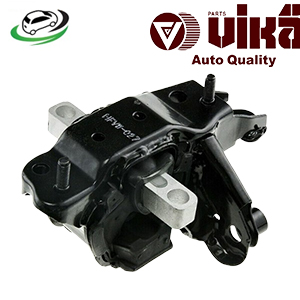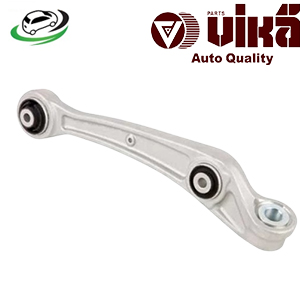-2%
Get Front Right Lower Track Control Arm Audi A7 C7 3.0 TDI/Audi B8 A4 FWD 2.0T/B8 A5/B8 S4/C7 A6/Q5 8K0407152C
The control arm is a crucial component of a vehicle’s suspension system, playing a vital role in maintaining stability, steering control, and overall driving comfort. Despite being relatively simple in design, the control arm is essential for ensuring that the wheels stay aligned and maintain contact with the road under various driving conditions. This guide will explore the function, types, construction, benefits, signs of wear, and maintenance of control arms, all within 1000 words.
Function of the Control Arm
The primary function of the control arm is to connect the vehicle’s chassis to the wheel hub, allowing the wheels to move up and down while keeping them aligned with the vehicle’s frame. This movement is necessary for the suspension system to absorb shocks and maintain smooth contact between the tires and the road. The control arm also plays a key role in maintaining proper wheel alignment and steering geometry.
In most vehicles, each wheel is attached to the vehicle’s frame through two control arms: the upper and lower control arms. These arms work together to allow vertical movement of the wheels while preventing them from moving side to side, which is crucial for maintaining stable handling and steering.
Types of Control Arms
Control arms come in different designs and configurations depending on the vehicle’s suspension system. The most common types include:
- Double Wishbone Control Arms (A-Arms):
- Design: The double wishbone suspension system uses two control arms per wheel, typically shaped like a wishbone or the letter “A.” The upper and lower arms work in tandem to allow precise control of the wheel’s movement.
- Advantages: This design provides excellent handling characteristics, allowing for better control of wheel alignment and improved stability during cornering.
- Applications: Commonly found in performance vehicles, luxury cars, and trucks, where superior handling and ride quality are desired.
- MacPherson Strut Control Arms:
- Design: In a MacPherson strut suspension system, there is typically only one lower control arm per wheel. The strut assembly itself serves as the upper control arm, simplifying the suspension design.
- Advantages: The MacPherson strut design is compact, lightweight, and cost-effective, making it the most popular suspension setup in modern vehicles.
- Applications: Widely used in front-wheel-drive vehicles, compact cars, and economy vehicles due to its space-saving design and cost-effectiveness.
- Multi-Link Control Arms:
- Design: Multi-link suspension systems use multiple control arms (often four or five per wheel) to control the movement of the wheel. These arms are connected to the wheel hub and chassis at various angles.
- Advantages: This design allows for more precise control of wheel movement, better handling, and improved ride comfort, especially on uneven surfaces.
- Applications: Common in high-end vehicles, sports cars, and some luxury SUVs, where optimal handling and comfort are prioritized.
Construction and Materials
Control arms are typically made from durable materials that can withstand the stresses of everyday driving and harsh road conditions. The most common materials used in control arm construction include:
- Steel:
- Durability: Steel control arms are strong and can handle significant loads and impacts. They are commonly used in trucks, SUVs, and heavy-duty vehicles.
- Weight: While steel is durable, it is also heavier than other materials, which can add to the overall weight of the vehicle.
- Aluminum:
- Lightweight: Aluminum control arms are lighter than steel, which helps reduce the vehicle’s unsprung weight and improve handling.
- Corrosion Resistance: Aluminum is also more resistant to corrosion, making it ideal for vehicles used in areas with harsh weather conditions.
- Forged or Cast Iron:
- Strength: Forged or cast iron control arms offer excellent strength and durability, making them suitable for high-performance and heavy-duty applications.
- Weight: Similar to steel, forged or cast iron is relatively heavy, which can impact fuel efficiency and handling.
Benefits of a Properly Functioning Control Arm
A properly functioning control arm is essential for maintaining the overall performance and safety of a vehicle. Some key benefits include:
- Improved Handling and Stability:
- Steering Control: The control arms help maintain the correct alignment of the wheels, ensuring that the vehicle responds accurately to steering inputs. This results in better handling and stability, especially during cornering or sudden maneuvers.
- Ride Comfort: By allowing the wheels to move up and down independently, the control arms help absorb road shocks and vibrations, contributing to a smoother and more comfortable ride.
- Enhanced Tire Life:
- Even Tire Wear: Proper wheel alignment, maintained by the control arms, ensures that the tires wear evenly. This extends the lifespan of the tires and reduces the need for frequent replacements.
- Reduced Rolling Resistance: Correct wheel alignment also minimizes rolling resistance, which can improve fuel efficiency and reduce overall tire wear.
- Safety:
- Stable Vehicle Dynamics: Control arms play a critical role in maintaining stable vehicle dynamics, especially in emergency situations. A well-functioning control arm ensures that the wheels remain aligned, preventing the vehicle from swerving or losing control.
- Preventing Suspension Damage: By absorbing shocks and maintaining alignment, control arms help protect other suspension components from damage, reducing the likelihood of costly repairs.
Signs of a Worn or Failing Control Arm
Over time, control arms can wear out or become damaged due to constant exposure to road conditions, temperature changes, and mechanical stress. Recognizing the signs of a failing control arm is essential for maintaining vehicle safety and performance:
- Clunking or Popping Noises:
- Symptom: One of the most common signs of a worn control arm is clunking or popping noises, especially when driving over bumps or making sharp turns. These noises indicate that the bushings or ball joints within the control arm are worn or damaged.
- Uneven Tire Wear:
- Symptom: If the control arm or its bushings are worn, it can cause misalignment of the wheels, leading to uneven tire wear. If you notice that your tires are wearing more on one side than the other, it could be a sign of control arm issues.
- Steering Vibrations:
- Symptom: A failing control arm can cause the steering wheel to vibrate, particularly when driving at higher speeds or braking. This vibration results from the loss of stability in the suspension system due to worn or damaged control arm components.
- Poor Handling or Steering Response:
- Symptom: If the vehicle feels loose or unresponsive when steering, it could be due to a worn control arm. This can manifest as a drifting sensation or difficulty maintaining a straight line, especially on uneven or bumpy roads.
- Visible Damage or Wear:
- Symptom: During a visual inspection, you might notice cracks, bends, or other signs of damage to the control arm or its bushings. Any visible damage warrants immediate attention and potential replacement of the control arm.
Maintenance and Replacement
Regular inspection and maintenance of control arms are crucial for ensuring vehicle safety and performance. Here’s how to maintain and replace control arms:
- Inspection Interval:
- Regular Checks: It’s advisable to have the control arms inspected during routine vehicle maintenance, such as oil changes or tire rotations. Early detection of wear or damage can prevent more severe issues.
- Bushing Replacement:
- Replacing Bushings: In some cases, the control arm itself may be in good condition, but the bushings are worn. Replacing just the bushings can restore the control arm’s function and save on costs.
- Control Arm Replacement:
- When to Replace: If the control arm is bent, cracked, or has excessive wear, it should be replaced immediately. It’s important to replace control arms in pairs (both sides of the vehicle) to maintain balance and even wear.
- Professional Installation: Control arm replacement can be a complex task, requiring the removal of other suspension components. It’s recommended to have a professional mechanic perform the replacement to ensure proper installation and alignment.
- Alignment After Replacement:
- Wheel Alignment: After replacing control arms, it’s essential to perform a wheel alignment. This ensures that the wheels are correctly aligned and that the vehicle handles properly.
Follow us on Facebook for more parts.





